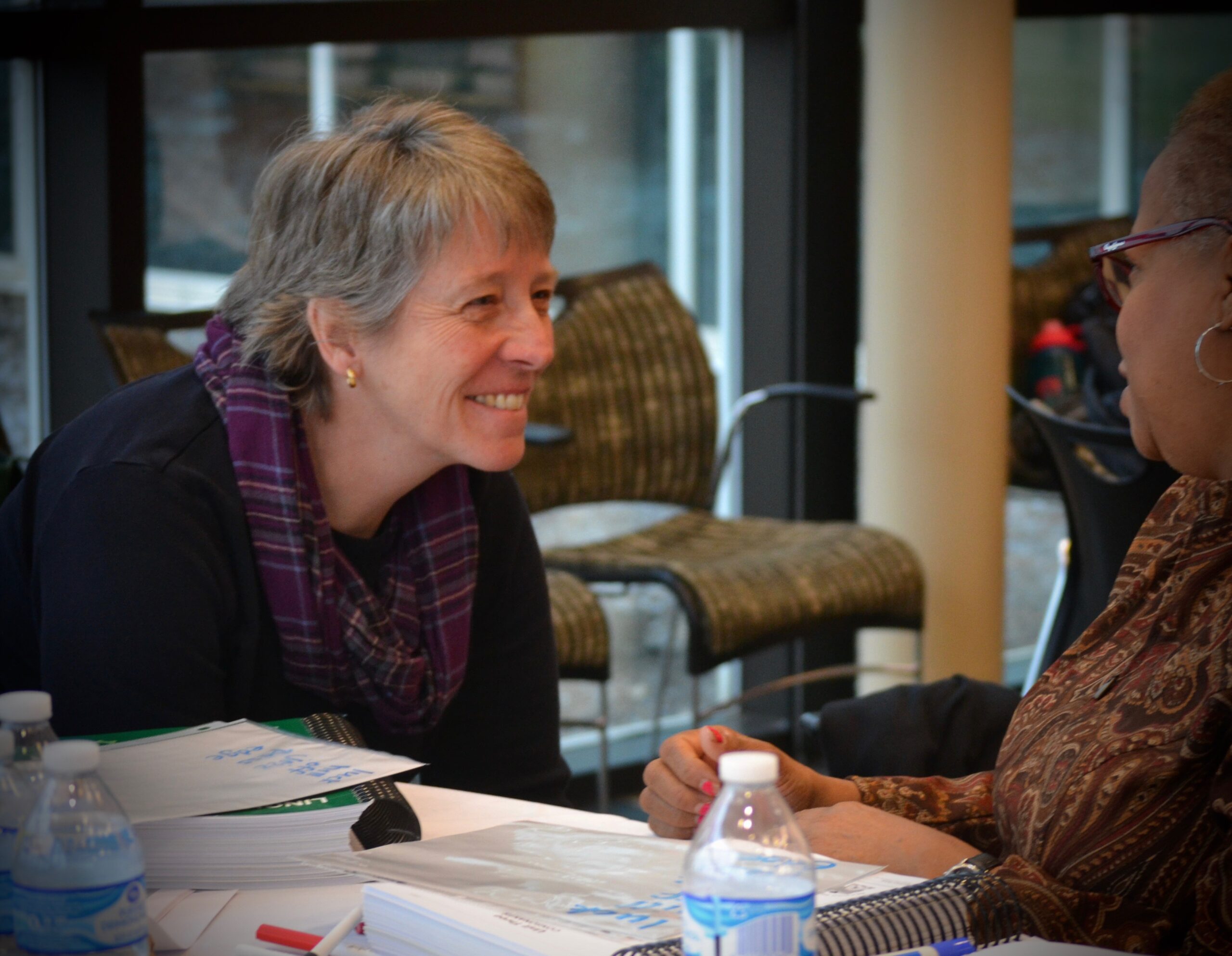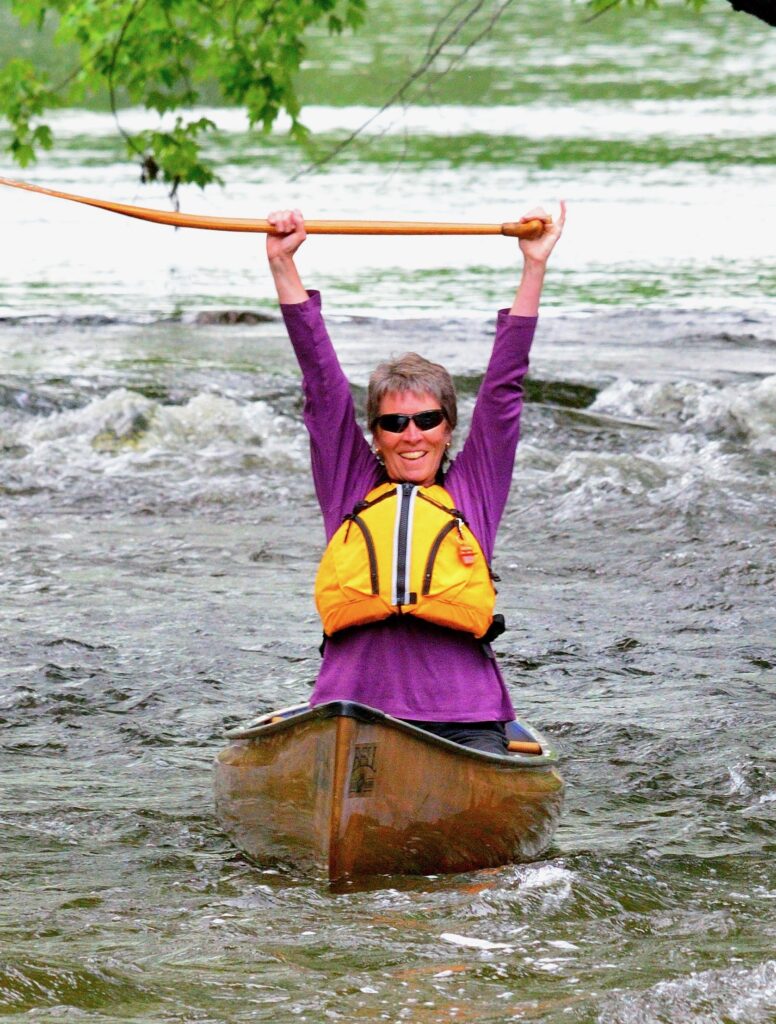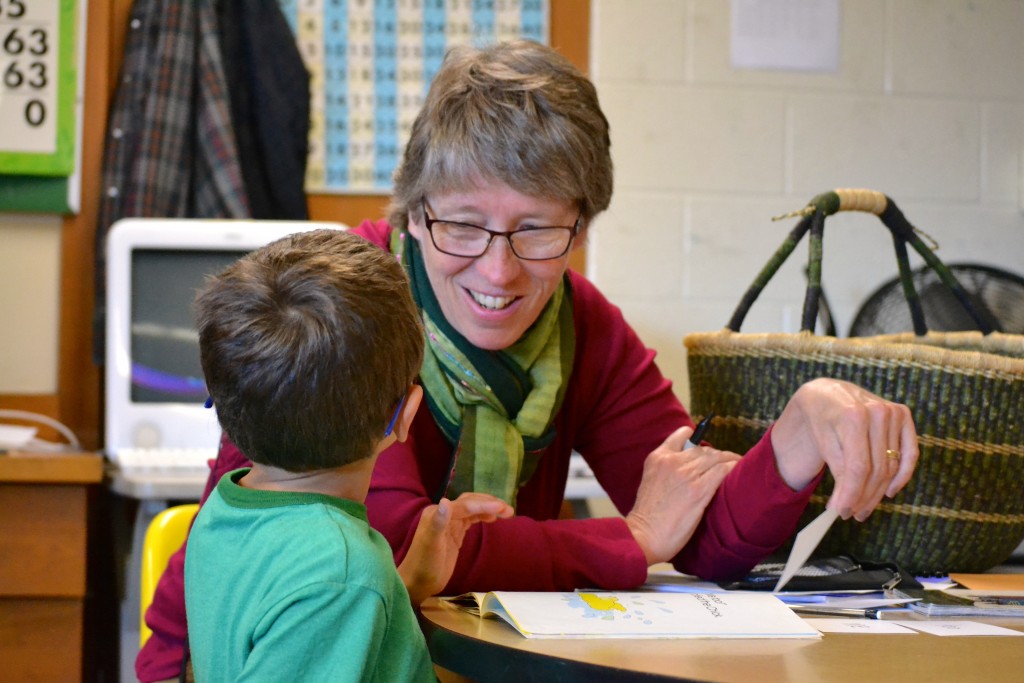
By Jo Mathis/AAPS District News Editor
After 18 years as a literacy consultant with Ann Arbor Public Schools, Deborah Wolter was hesitant to be interviewed regarding her upcoming retirement.
But while reflecting on her career, she realized she could highlight the important issues of inclusion that evolved between her childhood as an AAPS student and her last years as a literacy consultant.
“We’re currently in a climate of political, racial, cultural, linguistic, and economic turmoil in our country, especially as the election approaches, during the COVID pandemic, and unrest over Black Lives Matter,” she says. “But we have had challenges before and challenges ahead of us. Yet, we continue to show up—even virtually—press on, and listen fully to the humanity in all of us.”
Why did you decide to retire now, and what do you most want to say right now?
It just seemed time to retire. I am healthy and strong. COVID and my daughter’s continuing battle with metastatic bone and lung cancer were not factors in my decision. I have other literacy projects in our community and nationwide that I want to delve into, including getting a finished book on restorative literacies ready for publication and supporting organizations on their literacy initiatives. Even though things may seem very distressing right now, especially with the pandemic, our communities as a whole have gone through challenging times before. We collectively showed up and persevered through with small and big victories at the end.

What are some of your most memorable experiences growing up in Ann Arbor?
As a person with deafness, I grew up during our nation’s times of significant change. My birth came just two years after the time when Ruby Bridges, a black kindergartener, needed federal marshals to escort her into a newly integrated school. I was two years old when the Civil Rights Act was enacted to end segregation in public places and ban discrimination based on race, color, religion, sex, or national origin. However, it was not until I was 13 that the Education for All Handicapped Children Act followed in 1975. Until then, many states continued to exclude children who are deaf, blind, emotionally disturbed, developmentally disabled, or otherwise considered uneducable. Long before such laws were passed to protect my educational rights, AAPS wholeheartedly accepted me when I was seven years old. I attended Thurston, Clague, and Huron.
I came of age at the tail end of the Great Migration of people of color from the South. The Thurston neighborhood where I spent my childhood was filled with young professionals with families, professionals who worked at thriving pharmaceutical companies, the Big Three auto companies, in budding businesses, or on emerging technologies.
I wrote in my last book, “I can remember clearly, as if it were yesterday, a day when I was about six or seven years old, my father warned me to “be very nice” to the new “negro” family, with a little girl my own age, who was moving in down the street. But I was puzzled by my father’s admonishment because my inner voice said, “I am different, and I want people to be nice to me.” Absolutely, I would try to be nice to everyone, even to the new family down the street. Sometimes I came across as not being nice, because I would ignore people I didn’t hear, but I always tried to be nice.”

Even though Thurston was bursting at the seams with children from all over, including overseas due to the University of Michigan’s North Campus family housing units, this was the beginning of my awareness of othering in our neighborhoods and communities.
One of my vivid childhood memories was my confusion over the general disdain among the members of my neighborhood toward the spoken language of the families who lived on the other side of Green Road. This was during the lengthy and intense controversy surrounding the U.S. district court case of Martin Luther King Junior Elementary School Children v. Ann Arbor School District (also referred as the Ann Arbor Decision). AAPS was sued for failing to consider that the children’s use of Black English in the home prevented them from making progress in reading.
I wrote: “My neighbors’ attitude about black English puzzled me, because we had international children in my own school. These students came to Michigan because they had a parent who was a doctoral student or fellow at the university. They spoke with accents and varying levels of fluency in English, but I don’t recall anyone making derogatory comments about the way they talked. Being sensitive about the way I talk, I remember asking several adults around me why my neighbors were so upset by the Black English spoken over on Green Road. After all, we did have nearby neighbors who were black too, and it seemed to me that we got along fine. Each time I brought the subject up, I was sharply rebuked and told that the issue of how people talk was different for me, simply because I don’t hear. I was told that black people can hear, so they “should know better” and speak “correctly.” With arms crossed or frowns, the adults made it clear to me that that was the end of the discussion. Looking back now, I understand that the issue of race, language, and cultural assimilation may have been an uncomfortable topic for adults to discuss with children. Still, it didn’t make any sense to me, because if the students and their families from abroad could also hear, shouldn’t they know better, too?”
How was your life affected by the Americans with Disabilities Act of 1990?
I was a young adult, in college and starting my career, before the Americans with Disabilities Act was enacted. Before 1990, there weren’t any laws granting protections and access to disabled people in college, the workplace, or other public environments. I almost didn’t get a teaching certificate from Eastern Michigan University. And the University of Michigan rejected my application into a doctorate program because a professor insisted that, “deaf people cannot do sound research.” But again, AAPS ultimately hired me as an early childhood teacher in 1987 and hired me again as a teacher consultant after I started my family and taught for a few years in another school district.
How would you describe the literacy team at AAPS?
At AAPS, I ended my educational career as a literacy consultant with a literacy team who are mindful, embracing, and sustaining the multiple languages and variations of English languages children bring to school and their learning to read and write.
Throughout my long educational and professional career at AAPS, I was constantly awed—even during difficult times and through hard conversations—at various and tenacious efforts being made to embrace diversity, promote equity and foster inclusion.
How would you compare the services you received as a deaf child decades ago to what is available for children with disabilities today?
The technology available today is vast and can support more inclusion for people with disabilities. In fact, the availability of real-time captioning significantly changed my personal and professional life in that I felt more intelligent, included, and connected. When I was in school, I was able to learn content by reading handouts, books, filmstrip transcripts, and library books. When I was required to listen to lectures and couldn’t keep up, I silently counted the number of tiles on the ceilings, watched spiders build webs along the windowsills, and noticed the varying styles of my classmates’ shoes. With captioning, I am able to enjoy discussions, banter, and even gossip.
On the other hand, today there are more standards and testing every step of the way. Thus, there is more scrutiny on the capabilities of students, especially in the field of learning disabilities and dyslexia. I entered Thurston significantly behind my peers in language development, but through my inclusive education and a lot of reading, I eventually caught up. Nowadays, I am pretty hard to beat in a game of Scrabble or Bananagrams.
Do students today seem to embrace the concepts of inclusion more than they did when you were a child?
This is a difficult question. I know that children learn prejudice from prejudice, not from diversity itself. At the same time, it is hard for children to have emotionally and physically safe conversations about differences and inequities, particularly as they navigate social networks and news media. And it is hard for adults to come forth with difficult histories and how it impacts our societies today. But while we have made progress over my lifetime, these are challenging conversations that we must continue to have in order to keep moving forward for all of us.

Be the first to comment